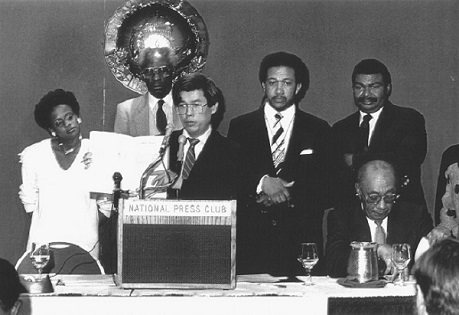“A True Game Changer”: Toxic Wastes and Race 30 Years Later—An Interview with Charles Lee
Thirty years ago Charles Lee was principal author of the landmark report “Toxic Wastes and Race in the United States.” This frequently cited work pioneered a new field of study as it demonstrated the pervasive reality of environmental racism across the country by documenting the disproportionate presence of toxic waste near communities of color. To mark the 30th anniversary of the report, I interviewed Lee.
In looking back over the last 30 years, what stands out to you as you reflect upon the impact and significance of the report after its ground breaking entrance into the public conversation on the environment?
Toxic Wastes and Race was a truly seminal work that has influenced generations of work to come. The reality uncovered by the report’s findings is now evident in all aspects of society, and the issue of environmental justice is now seen as a critical part of everything from environmental pollution, health disparities, community development, food security, transportation equity, energy policy to climate change.
Today, community activism on environmental justice issues is at a level that is broader and more sophisticated than ever before. There are hundreds of communities working to address environmental justice in all kinds of ways. Moreover, environmental justice is an area of critical research and scholarship. There are hundreds of university courses on the subject, thousands of articles, in both academic journals and popular venues, that focus on the issue. There is even a PhD program on environmental justice – at the University of Michigan School of Natural Resources. Environmental justice is also an indelible part of public policy at the federal state and local levels. A 2010 survey of state environmental justice activities found that 42 states, the District of Columbia, and the Commonwealth of Puerto Rico all have statutes, policies, or programs devoted to the subject.
I think the one conclusion that I would draw is that the issue of environmental justice, which did not have a name when the UCC began to address it, is now here to stay. I am profoundly grateful that the UCC has enabled me to do this work. It is humbling indeed to have done work that is a true game changer. Probably the most meaningful thing in all of this are the letters and messages I get from students and young people who point to this work as an inspiration for what they want to do with their lives.
This year not only marks the 30th anniversary of the report but also the 35th anniversary of the six-week campaign of civil disobedience that protested the arrival of trucks carrying PCB contaminated soil into Warren County, North Carolina. You organized a group from New Jersey on a trip to Warren County to lend solidarity.That trip set in motion the working relationships that would lead to your working on the report for the UCC’s Commission for Racial Justice. What lessons can you impart about how community-based activism and academic research can work best together?
First, activism aimed at making an impact on public policy and change in behavior is most powerful when it is backed up with a clear depiction of community impacts and empirical data. Second, the process of gathering information can be tremendously useful in building the capacity of community members as well as academic researchers. For community members, it helps them understand how to gather information that can be used to make their case. For researchers, it shows them the importance of community knowledge and how to make sure their work is relevant. The partnership building process helps all learn how to communicate, collaborate and work towards a common goal from different vantage points. Third, there are very significant gains made as a result of community engaged research. These include the adoption of statewide moratorium on new industrial hog operations facilities that employ the lagoon-and sprayfield system of manure management, the Navajo Law Banning Uranium Mining and Milling to protect tribal drinking water sources, and stronger nutrition standards by the Los Angeles Unified School District for meals eaten by hundreds of thousands of children every day.
In addressing environmental racism today, what do you see as the great challenges before us?
There are probably many ways to answer this question, but I think one of the most important challenges is nurturing the next generation of leaders. I observed on the 20th anniversary of the signing of Executive Order 12898 on environmental justice that “we must rise to the paradigmatic challenges created by climate change, increasing health and income disparities, equitable development, sustainable communities, globalization impacts such as goods (freight) movement, and other issues… EJ issues will be local, tribal, regional, national, and international. If we are to rise to these challenges, we must nurture new generations of EJ leaders—knowledgeable about how to work in both communities and institutions, armed with stellar technical and legal skills, and most important, guided by audacious vision, commitment, and spirit.” For this reason, it is really good to see all the students and young people come forward with a consciousness of these issues. They will be the next generation of leaders.
Related News
Walking the Talk: Environmental Practices and a Commitment to Justice
St. James United Church of Christ in Hamburg, New York (a suburb of Buffalo) has been...
Read MoreThe Antidote to Power from Above
With its themes of moral reckoning and repentance, this Lenten season brings into stark relief...
Read MoreDon’t Incinerate – Innovate!
Thirty-eight years ago, the United Church of Christ's Commission for Racial Justice released a...
Read More


